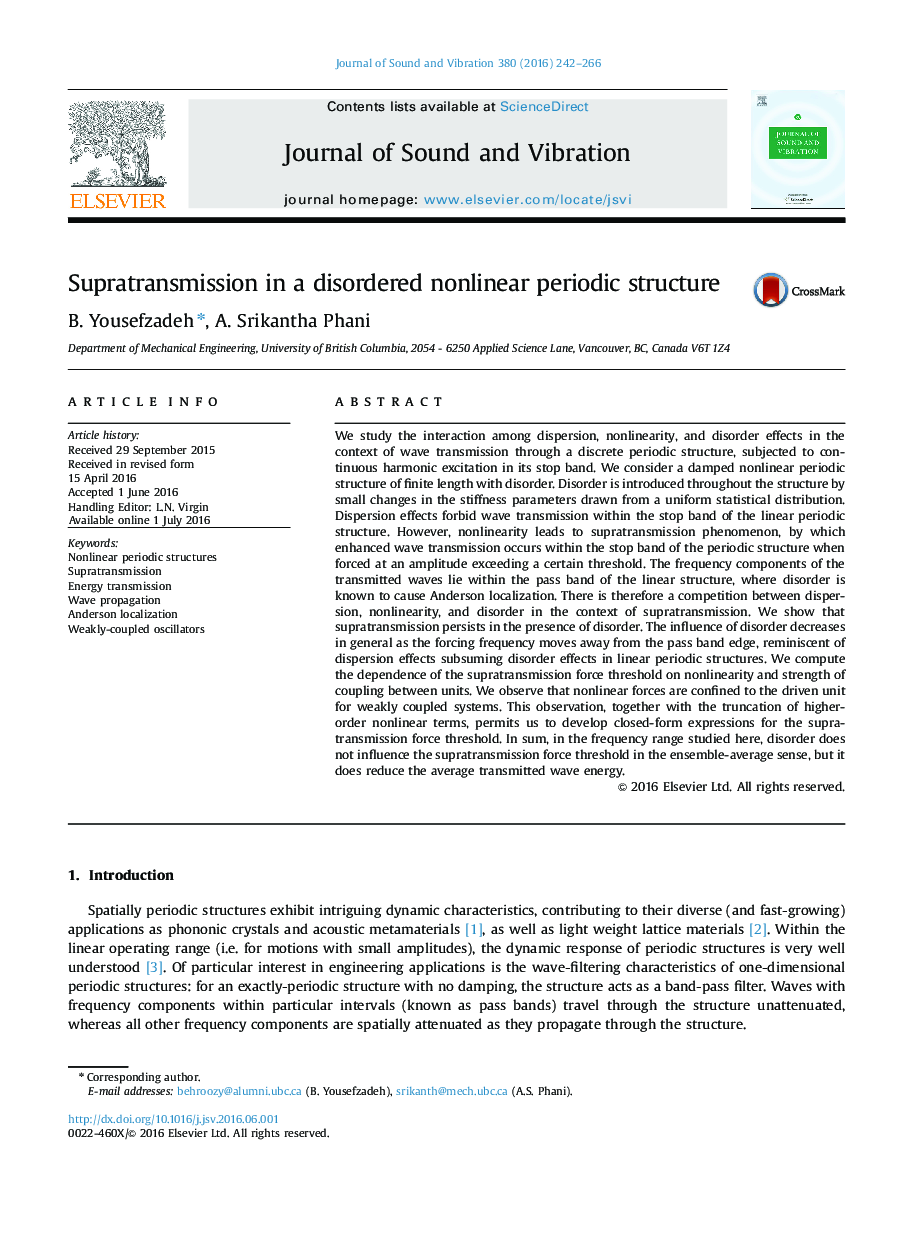| Article ID | Journal | Published Year | Pages | File Type |
|---|---|---|---|---|
| 286900 | Journal of Sound and Vibration | 2016 | 25 Pages |
•We study the interaction between supratransmission and Anderson localization.•Supratransmission persists in the presence of disorder.•The threshold forcing amplitude is robust to disorder in the ensemble-average sense.•Average transmitted energies decrease with disorder above the transmission threshold.•We predict the onset of supratransmission analytically for weakly-coupled structures.
We study the interaction among dispersion, nonlinearity, and disorder effects in the context of wave transmission through a discrete periodic structure, subjected to continuous harmonic excitation in its stop band. We consider a damped nonlinear periodic structure of finite length with disorder. Disorder is introduced throughout the structure by small changes in the stiffness parameters drawn from a uniform statistical distribution. Dispersion effects forbid wave transmission within the stop band of the linear periodic structure. However, nonlinearity leads to supratransmission phenomenon, by which enhanced wave transmission occurs within the stop band of the periodic structure when forced at an amplitude exceeding a certain threshold. The frequency components of the transmitted waves lie within the pass band of the linear structure, where disorder is known to cause Anderson localization. There is therefore a competition between dispersion, nonlinearity, and disorder in the context of supratransmission. We show that supratransmission persists in the presence of disorder. The influence of disorder decreases in general as the forcing frequency moves away from the pass band edge, reminiscent of dispersion effects subsuming disorder effects in linear periodic structures. We compute the dependence of the supratransmission force threshold on nonlinearity and strength of coupling between units. We observe that nonlinear forces are confined to the driven unit for weakly coupled systems. This observation, together with the truncation of higher-order nonlinear terms, permits us to develop closed-form expressions for the supratransmission force threshold. In sum, in the frequency range studied here, disorder does not influence the supratransmission force threshold in the ensemble-average sense, but it does reduce the average transmitted wave energy.
